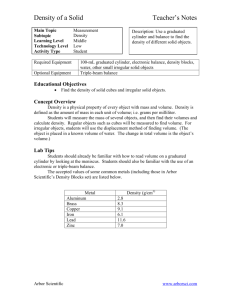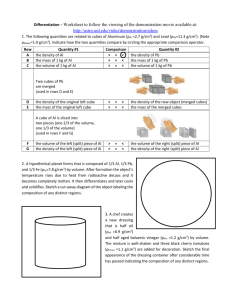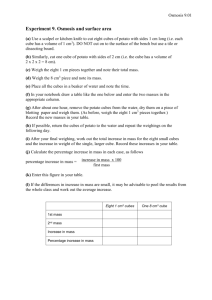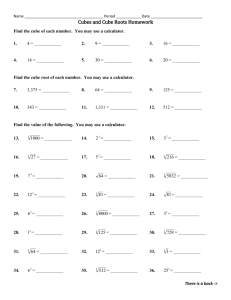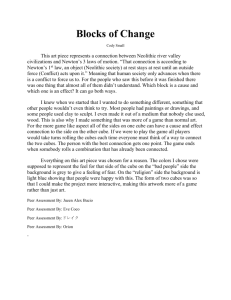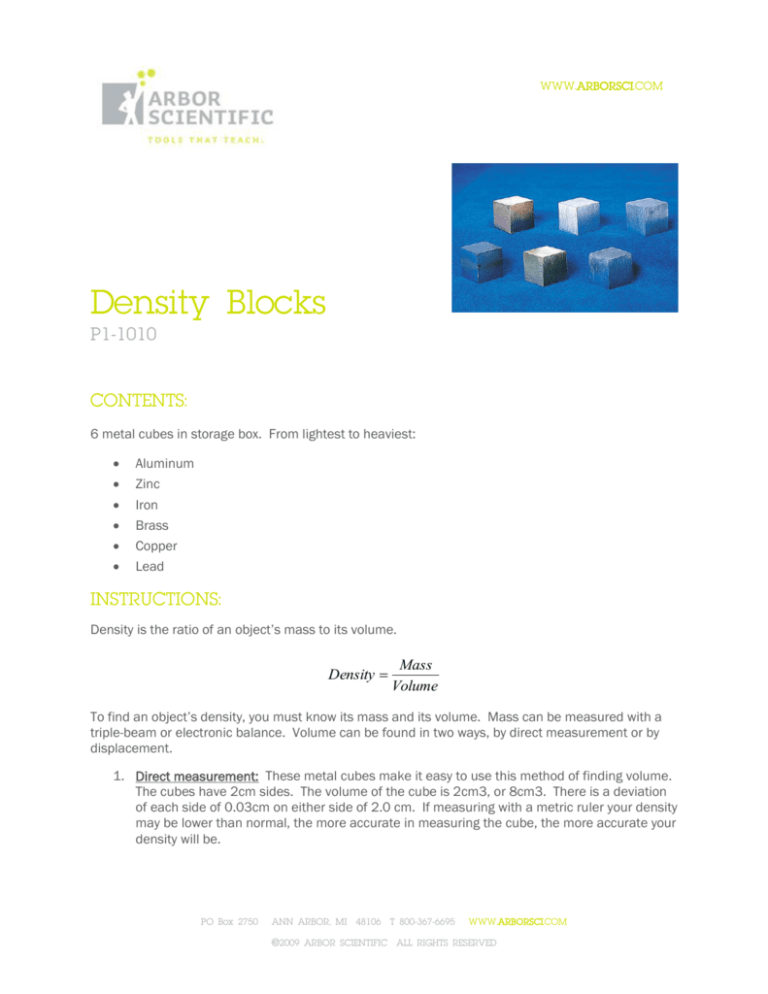
WWW.ARBORSCI.COM
Density Blocks
P1-1010
CONTENTS:
6 metal cubes in storage box. From lightest to heaviest:
Aluminum
Zinc
Iron
Brass
Copper
Lead
INSTRUCTIONS:
Density is the ratio of an object’s mass to its volume.
Density
Mass
Volume
To find an object’s density, you must know its mass and its volume. Mass can be measured with a
triple-beam or electronic balance. Volume can be found in two ways, by direct measurement or by
displacement.
1. Direct measurement: These metal cubes make it easy to use this method of finding volume.
The cubes have 2cm sides. The volume of the cube is 2cm3, or 8cm3. There is a deviation
of each side of 0.03cm on either side of 2.0 cm. If measuring with a metric ruler your density
may be lower than normal, the more accurate in measuring the cube, the more accurate your
density will be.
PO Box 2750
ANN ARBOR, MI 48106 T 800-367-6695
WWW.ARBORSCI.COM
©2009 ARBOR SCIENTIFIC ALL RIGHTS RESERVED
2. Displacement: The volume of regular or irregular objects can be found by this method. Add
water to a graduated cylinder and record the volume. Place the object in the water and
record the new volume. The difference in volume is the volume of the object.
Density has units of mass/volume, such as g/cm3 or g/mL. Normally, the density of solid objects is
measured in g/cm3. Note: 1mL = 1cm3.
Students often confuse density with mass and volume. This equal-volume set can help clarify the
differences. Mass is the amount of matter in an object. Heavier objects have more mass. The lead
block has more mass, more “stuff”, than the aluminum block.
Volume is the amount of space an object occupies. The blocks are all the same size. Their volumes
are equal.
Since the lead block has more mass in the same volume, it is more dense. The density of lead is
higher than the density of aluminum.
RESULTS:
You can expect some variation from one set to the next. The metal samples used to make the cubes
may have small amounts of other elements, and that can affect their densities. This is particularly
true of Iron, which can be any of several different types of cast iron.
Typical density values are listed here, along with the standard deviation from a sampling of 16 sets.
Standard deviation describes the amount of variation among the different samples. Larger standard
deviations indicate more variation. Your deviation may differ.
Aluminum (Al)
Zinc (Zn)
Iron (Fe)
Brass (Br)
Copper (Cu)
Lead (Pb)
Perfect Density (g/cm3)
2.8
7.0
7.9
8.3
9.1
11.6
Standard Deviation
(can be higher based on non-precise cube
measurement)
0.058
0.144
0.256
0.133
0.234
0.366
RELATED PRODUCTS:
Density Rod Set (P1-1020): The aluminum rod floats in cool water and sinks in warm. The PVC rod
does the reverse! Use density and thermal expansion to explain this discrepant event.
Triple Beam Balance (02-7500): 610g capacity, accurate to 0.1g.
PO Box 2750
ANN ARBOR, MI 48106 T 800-367-6695
WWW.ARBORSCI.COM
©2009 ARBOR SCIENTIFIC ALL RIGHTS RESERVED

